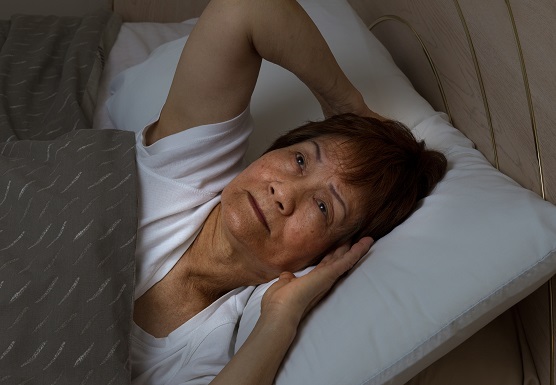The Link Between Sleep Apnoea and Diabetes

It’s common for people with type 2 diabetes to also have obstructive sleep apnoea (OSA), according to Dr Lee Yeow Hian, Consultant Chest and Sleep Physician at Lee Respiratory and Sleep Clinic. We learn more about the sleep disorder and its link to diabetes.
SEPARATE BUT RELATED CONDITIONS
While OSA and diabetes can occur independently, they frequently overlap, according to Dr Lee. Patients who are overweight and obese have a higher risk of developing both conditions.
“It has been reported that up to 40 percent of OSA patients may have type 2 diabetes and up to 20 percent of type 2 diabetics may have OSA. It is therefore important to screen for both OSA as well as diabetes in these at-risk groups,” said Dr Lee.
UNDERSTANDING THE RELATIONSHIP
There are several mechanisms by which OSA increases insulin resistance and the risk of type 2 diabetes. Dr Lee explained three interlinked scenarios that can lead to or worsen diabetes.
- The repeated episodes of apnoeas and arousals lead to overactivation of the sympathethic nervous system with an increased production of catecholamines and cortisol. This is part of the body’s fight or flight response and leads to higher blood sugar through increased gluconeogenesis and breakdown of glycogen.
- Cycles of low oxygen and hyperoxia resulting from repetitive apnoeas and hyperpnoeas leads to increased oxidative stress and increased levels of inflammatory cytokines, which in turn causes increased insulin resistance.
- The sleep fragmentation and intermittent hypoxia in patients with OSA, along with the mechanisms mentioned above, leads to a decreased Adiponectin and increased Leptin level, which again promotes insulin resistance and glucose intolerance.
In layman’s terms, OSA disrupts the metabolism and stresses the body by depriving it of oxygen. This in turn triggers the release of stress hormones that can interfere with the body’s blood glucose levels.
TREATING OSA
The ‘gold standard’ treatment for OSA is Continuous Positive Airway Pressure (CPAP) therapy. During this therapy, a minimal pressure is applied to the upper airway, which prevents it from collapsing while sleeping. When the repeated closures of the upper airway are prevented, the patient’s breathing is maintained during sleep, preventing the harmful cycles of apnoeas, hyperpnoeas, arousals and sleep fragmentation. This is a non-invasive treatment with no long-term side-effects, although a period of acclimatisation is required for most patients.
For selected patients, a mandibular advancement device can be considered. These oral appliances work by moving the mandible (the lower jaw) forward and thus opening the airway.
Surgery is sometimes used to complement the usual treatment options. For example, nasal surgery aims to improve nasal patency, or clear the nasal passage, to improve CPAP tolerance. With a few exceptions, surgery to the upper airway – such as the palate or the base of the tongue, for the sole purpose of treating OSA is generally considered a treatment of ‘last resort’ that is only considered when all other treatment options have been exhausted. In general, weight loss is recommended for overweight patients with OSA or type 2 diabetes. Positional therapy can also help patients whose OSA occurs mainly in certain positions, usually supine. In these cases, sleeping on the side may help.
REAL RISKS
Patients with severe OSA, which is defined as anyone who stops breathing or has periods of under-breathing or shallow breathing more than 30 times in an hour, have been proven to be at an increased risk of dying prematurely.
It is now widely accepted that untreated OSA is an independent risk factor for sudden cardiac death, heart attacks, stroke, hypertension, heart failure, abnormal heart rhythms and insulin resistance. With fatigue comes a loss of alertness and an increased risk of becoming involved in traffic accidents and potentially fatal mishaps related to machinery. According to reports, the risk of dying due to any cause is tripled for patients with severe OSA compared to their peers who do not suffer from the condition.
Apart from the long-term health consequences, the sleep fragmentation and disruption resulting from OSA can lead to excessive daytime lethargy, sleepiness, poor concentration, poor mood and low productivity. In addition, bedmates frequently complain of disrupted sleep due to their partners’ frequent gasping and snoring.
OTHER RISK FACTORS
It is now widely accepted that being overweight, diabetic or not, increases the risk of developing OSA as the excess tissue causes narrowing of the upper airway.
People who snore are also at a higher than average risk of suffering from OSA, as snoring indicates that the airway is narrowed during sleep. In addition, patients with a family history of OSA are particularly at risk as this may indicate a familial tendency to have a small or narrow airway.
In general, Asians have a narrower airway than other races. When coupled with a small jaw, this increases the risk of airway closure during sleep, regardless of whether the person is overweight. Unless OSA is managed with weight loss, it seldom goes away without treatment.
Article contributed by Dr Lee Yeow Hian, accredited doctor of Mount Alvernia Hospital.
This article is taken from our My Alvernia Magazine Issue #35. Click here to read the issue on our website or on Magzter.


